Sciences of Traditional Chinese Medicines (English Section)
☛About Us
☛Contact Us
☛Driving Direction
☛Nonprofit Organization
☛Journal of SOTCM (General Edition)
☛Journal of SOTCM (Professional Edition)
☛Xing Lin (Apricot Grove) Forum
☛Journal of Chronomedicine
☛Journal of Holographic Biomedicine
☛Education Programs
☛Continuing Education for Massage Therapist
☛Continuing Education for Acupuncturist
☛Continuing Education for Medical Doctor
☛Self Massage Education
☛Reflexology Massage for Infant and Child Education
☛Qi Gong for Weight Loss Education
☛Tai Chi Chuan (Tai Ji Quan) Education
☛Medical Chi Kung (Qi Gong) Education
☛Basic Knowledge of Medicine and T.C.M. Education
☛Medical Consultation
☛Services and Products
☛Sales Promotions and Advertisements
☛USA Transfer Factor Sale
☛Events and Academic Meetings in T.C.M.
☛Volunteers and Donators
☛Testimonials
☛Reference Links

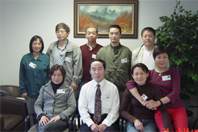
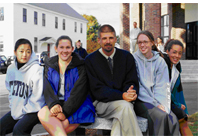



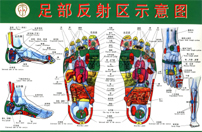

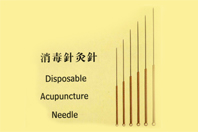


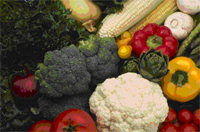

A Precious Chinese Rarity: Traditional Chinese Medicine (TCM)
With the continuous advancement of human society, people's expectations for healthcare become higher and higher. Though medicine has progressed day by day under the leadership of modern science, many difficult medical problems fail to be solved by modern scientific techniques. Moreover, modern medicine has been responsible for some iatrogenic diseases. In order to address the aforementioned problems and shortcomings of modern medicine, people have turned to natural treatments, including natural medicinal treatments and non-medicinal treatment.
Ancient and modernized traditional Chinese medical techniques and materia medica belong to the category of such natural treatments. Although TCM is very old, it remains relevant and offers unique approaches to cure the illnesses that people face today. TCM has modern relevance for the following reasons.
First, traditional Chinese medicine has intact theoretical systems.
The unique theories of TCM originate from countless years of direct experience with human illness. Many of these theories have not changed and remain relevant today. The thousands of years of experience have been recorded in tens of thousands of tomes. They are of valuable documental value and have relevance to today’s diseases.
Second, traditional Chinese medicine has an abundant myriad of treatment methods.
According to the method of traditional Chinese medicine, the treatment methods can be divided into oral medicine and external treatments, including acupuncture and moxibustion, therapeutic massage, medicinal plaster, qigong, exercises, dietary therapy, etc. These methods have been refined from testing them directly on patients for thousands of years. Over the years, TCM has integrated modern technology into its cure techniques. For instance, modern science and technology have given TCM new methods of delivering drugs to patients and new tools to perform acupuncture on patients. As TCM continues to be modified by modern science and technology, it will be more and more perfected.
Third, the therapeutic range of TCM is very extensive.
Because many hospitals only have a single department for TCM, many people are under the impression that TCM addresses only a limited number of diseases or provides a limited range of treatments. In fact, almost every disease can be treated by TCM, and TCM can be divided into many sub-branches and sub-disciplines. Thus, TCM’s therapeutic range certainly exceeds that of a single medical department. For instance, acupuncture therapy, according to scholars, can be used for more than 300 indications.
Fourth, the curative effects offered by TCM are stable and long lasting.
TCM treatments aim at the pathological changes of organs, to dispel the factors that the diseases produce fundamentally. Thus, many diseases can be cured, and the cures are lasting. TCM achieves cures by adjusting one’s own physiological function and offers a unique alternative to treating illnesses to which modern medicine currently does not have answers.
Fifth, TCM treatments generate very few side effects.
TCM uses mainly nontoxic, natural herbs or benign physical stimuli to act on the human body in order to cure the disease. Therefore, its treatments are safe, with little side effects. By contrast, modern medicine offers artificial chemotoxicants that generate many side effects. Even many surgical procedures cause side effects and sequelae.
Sixth, treatment of traditional Chinese medicine is economical, simple, and convenient.
The natural plant and animal substances that TCM adopts are very abundant. Such natural medicines are easy to manufacture; the equipment used is simple and convenient, and the costs are relatively low. Some scholars have gathered statistics that show that there are more than 50,000 medicinal plants in the world, and less than 1% of these plants have been researched comprehensively. Thus, TCM research has much room for development. The synthetic drugs used in modern medicines are short-lived, easily eliminated because heavy toxicity, or readily induce tolerance. Thus, they are difficult to develop. In the developed countries such as the US, it generally takes ten to twenty years to design, test, and approve a new drug, with expenses average up to hundreds of millions of dollars. So, why not recommend people to use the TCM methods to treat the disease?
Traditional Chinese medicine has played a great role in the Chinese people's health care and has already spread to a lot of countries in Asia and Europe. However, because TCM arrived to the US relatively recently, those who understand it are not many. The cultural and sociological differences between China and the US also impede acceptance of TCM in the US. Furthermore, the current medical care system prohibits integration of TCM into hospitals. Although there are numerous TCM practitioners in various states across the country, TCM is still considered folk medicine to some degree and cannot enter mainstream medical circles and academia.
In order to overcome these barriers, we must aim to popularize and advance TCM to serve people of the world better as well as contribute to modern medical understanding. Our website and publications, which gather scientific and intellectual material and organizes it into an organic whole, strive to accomplish these goals. Hopefully, we can increase the general public’s knowledge of traditional Chinese medicine for readers and play a role in pointing out the right way to structure the health care system to deliver the best, most comprehensive treatments to people.
We welcome the masses of readers who visit this website and the incoming telephone calls or letters that inquire about health or medical treatments. We will try to answer them to the best of our ability. Opinions or suggestions are certainly welcome too. Your interest in our publication is to our delight, and your constructive opinions or criticisms are indispensable to the strength our publications.
Our services include clinical services, education, and publication. Please use this website to better understand us and to communicate with us.